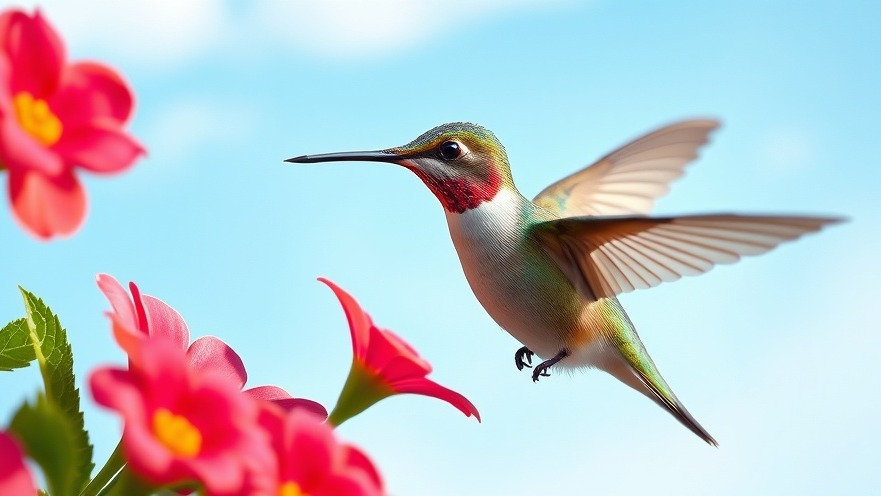
The Fascinating World of Hummingbirds in Eco-Gardening
If you're an eco-conscious homeowner or a modern homesteader, the tiny creatures of the garden can serve as both a source of inspiration and a reminder of the delicate balance of nature. Observing the daily activities of hummingbirds, like the Black-chinned Hummingbird, can turn routine gardening tasks into magical moments that reconnect us with the environment. Their flight, often punctuated by dramatic displays of aerial acrobatics, is a front-row seat to nature’s breathtaking artistry.
Why Hummingbirds Matter in Your Eco-Garden
Many may wonder, why should gardeners pay attention to hummingbirds? These feisty little pollinators are more than just beautiful additions to our gardens; they play an essential role in supporting local ecosystems. By creating habitats that attract them, we contribute to biodiversity, ensuring that flowering plants can reproduce. This helps maintain the health of our gardens and the surrounding environment, which is crucial in areas suffering from habitat loss.
Creating a Hummingbird Haven
To entice these birds into your garden, consider implementing eco-friendly gardening practices that focus on sustainable home design. Start by planting native flowering plants that bloom at different times to provide a continuous food source throughout the seasons. Plants like Red Yucca and American Basket flowers are not only visually appealing but also attract hummingbirds. Additionally, avoiding pesticides and herbicides ensures a toxin-free environment for these sensitive creatures.
Water Conservation and Hummingbirds
Water conservation is another critical aspect of creating an eco-friendly landscape. Hummingbirds thrive in gardens that provide consistent water sources. Build small bird baths with shallow edges and ensure they are topped with clean water. This not only supports hummingbirds but helps other wildlife as well.
Personal Reflections: The Joy of Observation
With every busy day in the garden, taking a moment to appreciate the beauty around us becomes increasingly important. As I carefully dead-head flowers and observe the vibrant hummingbird zooming from bloom to bloom, there’s a profound sense of connection to nature—an intimate understanding of the delicate web of life we are all part of. This perspective translates beautifully into our broader environmental philosophies; actively caring for our gardens encourages sustainable living and awareness.
Future Trends in Eco-Gardening Practices
Looking forward, it’s critical to emphasize continuing education about eco-friendly gardening methods. The focus should shift towards adopting zero-waste practices in our gardening routines, encompassing everything from organic composting to creating biodegradable plant supports. Resources such as community gardening workshops or online webinars dedicated to sustainable gardening can empower homeowners to take action and further their eco-journeys.
Practical Tips for Eco-Friendly Gardening
Introduce native plants: Choose plants that thrive in your local climate, reducing the need for excess watering and fertilizers.
Shop local: Support local nurseries that practice sustainable growing methods, promoting local biodiversity.
Set up water catchment systems: Harvest rainwater to utilize in your garden, thereby conserving precious water resources.
Encourage composting: Composting decomposed organic materials not only enriches the garden soil but also diverts waste from landfills.
The Bottom Line
Witnessing the energetic presence of hummingbirds in your own garden offers more than just visual pleasure; it embodies the principles of sustainable home design and eco-friendly gardening. The decisions we make today about landscaping and gardening can have significant impacts on the ecosystem we cherish. So, as you plan your garden layout this upcoming season, remember to consider how to create a harmonious space that attracts and supports the wildlife around you, enhancing both your living environment and the health of the planet.
Take action now! Embrace eco-friendly gardening practices and make your home a sanctuary for both you and the wildlife that enrich our lives. Together, we can cultivate a greener, more sustainable world.
 Add Row
Add Row  Add
Add 




Write A Comment